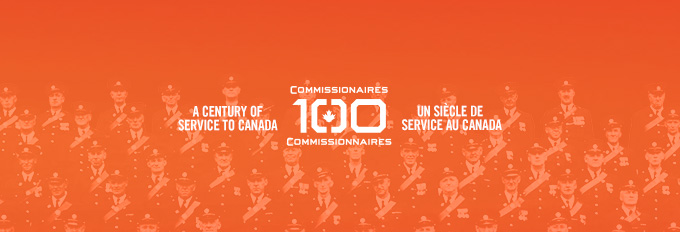by David J. Bercuson
 |
|
A peacekeeper performs gate security as an advance party prepares a camp for troops deployed to Eritrea, Africa. |
In November, the Centre for Military and Strategic Studies released a report that was 10 months in the making. Entitled To Secure a Nation: The Case for a New Defence White Paper, the 38-page report was based on 27 individual studies conducted by some of Canada’s leading defence and security experts. The report argued that the 1994 Defence White Paper had been a good document for its day, but that circumstances had changed so dramatically in the years since that it was now time for a full security and defence review.
The war in Afghanistan surely points to one of those new circumstances: the urgent need to expedite the process of creating true operational “jointness” in the Canadian Forces as a prerequisite for rapid power projection. Because although the CF is nominally a unified force, it continues to be structured much like the Canadian military that emerged from WW II. It is still a virtually separate army, navy and air force with a more or less “purple” staff responsible for overall recruitment, logistics, planning, operational intelligence and other unified areas, but not for joint operations.
And yet if there is one key lesson to be learned from the war on terror, it is that a true joining is absolutely necessary for military forces to possess the flexibility to respond quickly, virtually any time, and at any place. There is virtually no militarily effective way to defend ourselves against those who would attack our innocents without warning, with utter ruthlessness, and with no regard for cost in human life either to the victims or to the attackers.
In that respect, we are facing a threat today that is actually not unlike the ongoing nuclear threat that we faced every day during the more than 50 years of the Cold War. Our real defence against sudden air-atomic attack then was massive retaliation, or mutually assured destruction, called MAD, or just plain deterrence. All amounted to the same thing; the certainty in the mind of the potential attacker that his act of mayhem would bring an equal, if not greater act of mayhem directed at him in response.
That concept was not morally comfortable to some people in this country and, in a crude way, it seemed to put the western liberal democracies on the same level as the Soviet dictatorship which threatened us. But however this approach may have been condemned by some theologians or philosophers, it was effective in two dramatic ways. First, it prevented a nuclear holocaust. Second, the Soviets went bankrupt trying to maintain the balance of terror. MAD may have been mad, but it worked.
The threat of quick, ruthless, massive, retaliation–nuclear or otherwise–will not deter suicidal maniacs from attacking our cities, our transportation systems, or our innocent commerce, but even suicidal maniacs must have a safe haven from which to plan, to prepare for, and to launch their attacks. And that is where the effectiveness of such retaliation can be brought to bear; against the nations that harbour terrorists. If military forces can be quickly mustered which can be projected effectively at long distances to even the most hostile of environments to severely punish the hosts of the terrorists and to root the terrorists out, then the threat of terror on a massive scale will diminish.
What can Canada do to help achieve that objective? It can be ready next time not simply to send a navy to a conflict in a land-locked nation but to deploy a combat-ready joint strike/reaction force in numbers large enough to make a significant contribution to any forward-defence operation which our Allies might mount.
The basis for such a strike/reaction force already exists in the three jump companies maintained by each of the Regular Force infantry regiments. Although three jump companies do not by themselves provide the basis for an airborne battalion, they are currently the only repository of parachute training and tradition in the Canadian military.
A ready reaction battalion must have a parachute capability not because mass jumps into combat are ever again likely to be required–or feasible–but because the individual soldiers who make up such a force may sometimes need to be inserted into the battlefield environment either individually or in section, platoon, or even company-size contingents. In any case, the greater the number of field and combat skills the individual force members possess, the more flexible will that force be. Just as the United States Army Rangers and Special Forces must have parachute training, so must any Canadian strike/reaction force.
Such a joint strike/reaction force will also need the means for rapid deployment at long distances. Air mobility is best but limited in that it would take a large number of dedicated transport aircraft to move a battalion and all the necessary support elements that go with it from Canada to, say, some Central Asian nation in as short a time span as possible. Sea transport is slower but more flexible. It also offers the opportunity to deploy tactical helicopters or even Harrier-type jets such as the recently announced U.S. Naval and Marine Corps versions of the Joint Strike Fighter. Whatever the physical shape of such a force, it will not work unless those elements of the air force, navy and army assigned to it develop a true mentality of working together, with “purple” thinking not just at the logistical or planning level, but at the most basic levels of communications, intelligence sharing, and small-unit operations in actual combat situations.
For now, any such thoughts are science fiction, but so were thoughts of passenger jets filled with people crashing into the World Trade Center prior to Sept. 11. We ought soon to face the fact that the traditional roles that our military was designed to fulfil are not enough. Canada, alongside its allies, must develop the means to quickly project power into any area from which a threat to our well-being arises. This task is not beyond our capabilities; up to now, it has proven to be beyond our imagination.
David J. Bercuson is the Director of the Centre for Military and Strategic Studies and was project leader for the report.
Advertisement



















